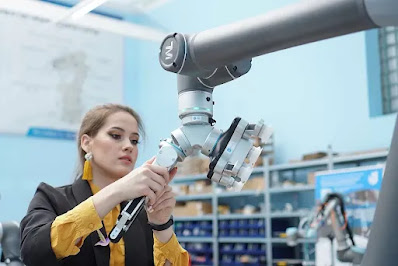Collaborative Robot Market Is Anticipated To Expand As A Result Of The Rising Demand For Automation
 |
| Collaborative Robot Market |
Cobots, also known as collaborative robots, are robots that can work in collaboration with people to improve human abilities. Using collaborative robots, also known as cobots, has many benefits, including the ease with which they may be programmed, installed, and expanded to do new jobs.
The global Collaborative Robot Market is anticipated to expand as a result of the rising demand for automation in a variety of industries, including healthcare, automotive, food and beverage, metal and machining, plastic and polymers, retail, and others.
Cobots, or collaborative robots, are utilised in businesses to automate tasks like material handling, welding, welding assembly, packaging, labelling, pumping, painting, and spraying. For instance, cobots are used in the food and beverage industry to quickly fill a huge number of food containers. Cobots are used in the manufacturing sector to put together the product's component pieces.
The global Collaborative Robot Market is anticipated to increase, but during the forecast period, it will be constrained by issues such as a lack of specialised labour for cobot operations and a slow uptake of cobot technology. Technology for collaborative robots, or cobots, is becoming more swiftly, and it is challenging for workers to quickly adapt it. Additionally, ineffective network management is anticipated to impede the expansion of the global collaborative economy.
The Market For Collaborative Robots (Cobots) Worldwide Was Worth Us$ 691.2 Mn In 2020.
A collaborative robot, often known as a Cobot, is a robot made to work alongside people to complete a certain task. Robots that work in collaboration with humans are programmed and made to react to their actions and behaviours. Cobots have a number of advantages, such as simple programming, quick setup, quicker payback in the robot industry, better robot-human interaction and efficiency, increased return on investment, safer working conditions, suitability for small- and medium-scale production, and safely handling complex and hazardous tasks.
The most common grippers utilised by collaborative robots are anticipated to be electric grippers. Electrical grippers are not appropriate for demanding tasks that call for a lot of clamping force to hold heavy objects. The weight of collaborative robots, however, rarely surpasses 20 kg, and the bulk of real-world applications call for a payload of 5 kg or less, therefore this is not a limitation for cobots.
It is also simple to alter the gripping force of electric grippers, which limits the force applied and makes the robotic system safe for cooperative operation. The installation of external clamps and hoses is also unnecessary with electric grippers, simplifying the certification procedure for cooperative systems.



Comments
Post a Comment